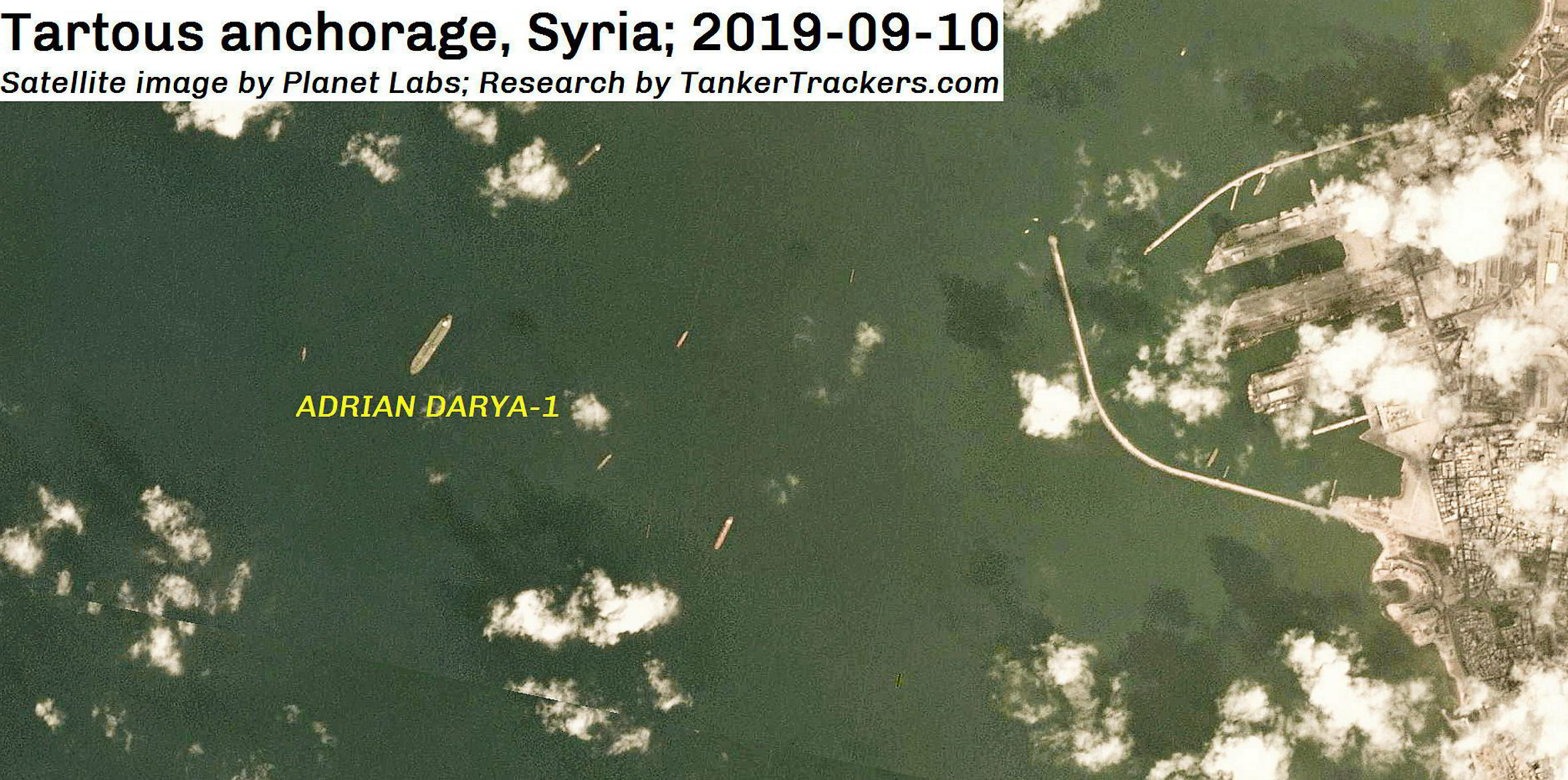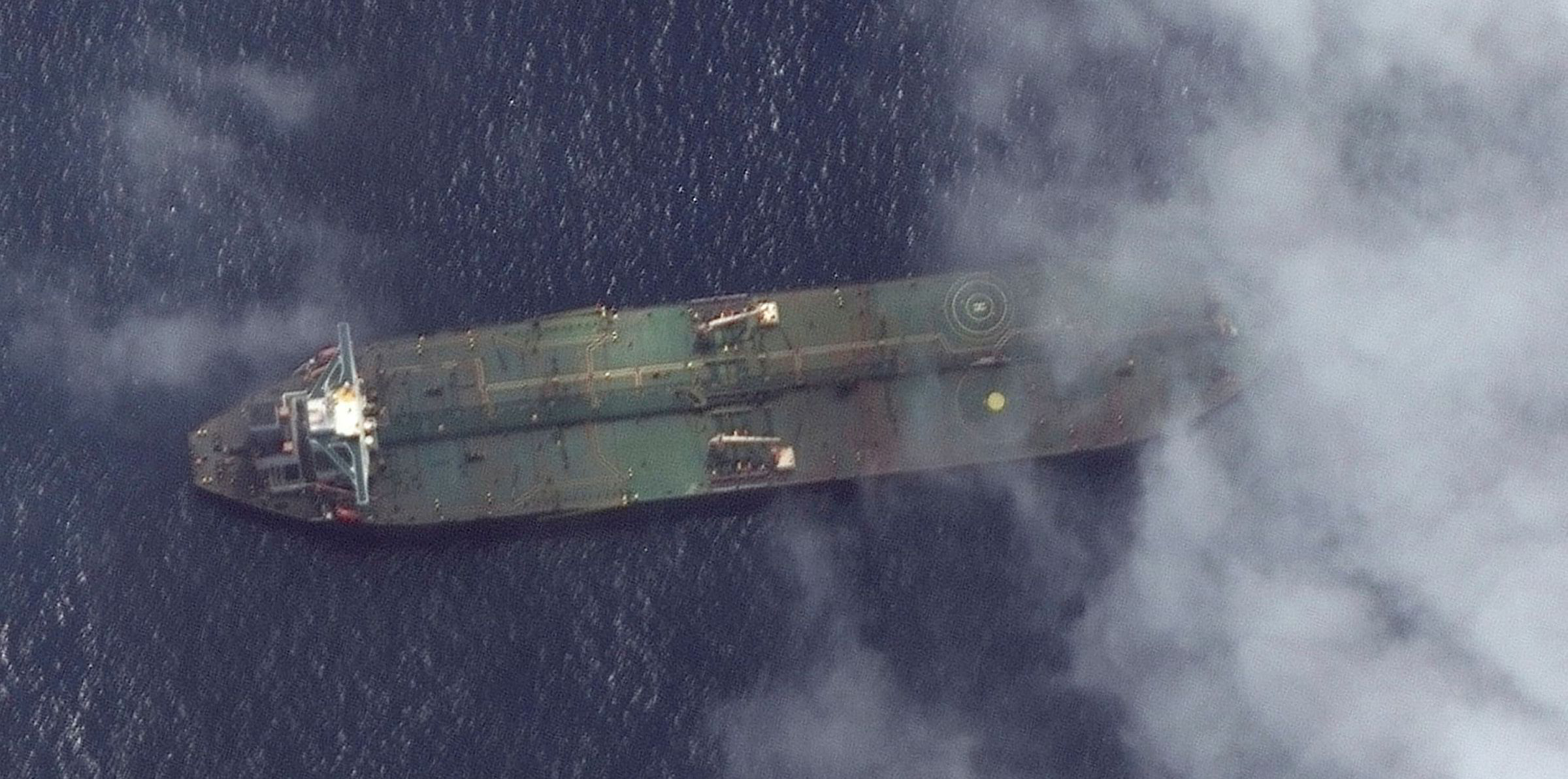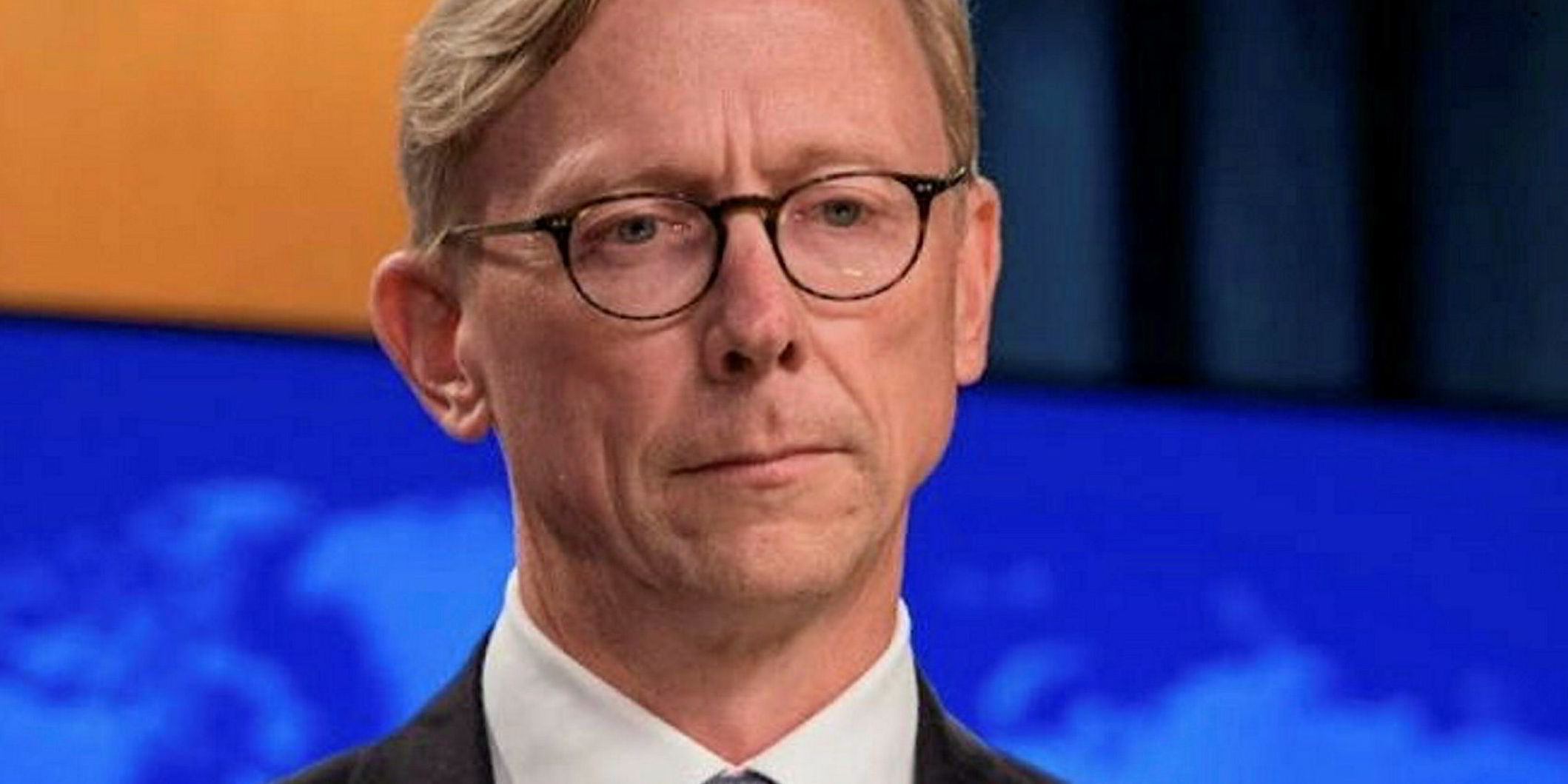Iran has stated that the controversial tanker Adrian Darya 1 already offloaded its crude cargo, but satellite imagery and vessel-tracking data tell a different story.
Iranian foreign ministry spokesman Abbas Mousavi said on Sunday that the 301,000-dwt VLCC (built 1997) discharged at a Mediterranean port, the official IRNA news agency reported.
"We had already said that we would sell our oil, and acts of vexation would have no effect on our plans," Mousavi added.
He said US pressure to seize the vessel was a violation of international maritime regulations, and such measures would only cause "trouble for those who take them."
However, based on satellite images provided by Planet Labs, TankerTrackers.com suggested Iran’s official statement may be false.
According to Samir Madani, one of the tanker intelligence provider’s founders, the VLCC was still fullly laden with crude in the anchorage of Baniyas, Syria as of Tuesday afternoon and no discharge had occurred.
“It will take a STS (ship-to-ship transfer) with a suzemax to do so,” Madani said.
The 159,500-dwt, Turkish-owned Savior (built 1999) and the 160,000-dwt Iranian-owned Sarak are in the same anchorage but they are fully loaded. Madani said the 160,400-dwt Sandro (built 2000) was empty 23 kilometres west of Jablah and could be a candidate for STS operation.
“If Sandro does an STS with Adrian Darya 1, then the oil will remain in Syria. If Sarak or any other Iranian-flagged vessel does an STS with Adrian Darya 1, then they'll both likely head back to Iran or elsewhere with that oil,” Madani said.

According to Madani, Sandro is linked to Syrian tycoon Samer Foz, who faces US sanctions due to his support for the Assad regime.
An email seeking comments from Iran’s foreign ministry has yet to be responded at the time of writing.
Maxar Technologies, a US space technology firm, said on Saturday that the 301,000-dwt tanker (built 1997) was close to the port of Tartus.
The ship had turned its AIS off on Monday in the east Mediterranean off Lebanon.
Speculation had been mounting that it would call in Syria or try to offload its crude cargo on to other smaller ships.
“I would dare to say this is the most tracked vessel on earth at all time,” said Matan Makleff, a business development manager with data analysis company Windward. “I guess there are hundreds of analysts or just curious people watching this vessel.”
“It has to transship…either to be able to cross the Suez [Canal] or in order to transfer to Syria.”
Sanctions breach?
The former Grace 1 hit the headlines when it was seized in Gibraltar in July for allegedly attempting to take the oil to Syria, in breach of European Union sanctions.
But it was released in August after Iran pledged the crude would not go to Syria.
It has since sold its oil and registered destinations in Greece and Turkey before removing them.
Blacklisted
The US has blacklisted the vessel and its Indian master for “providing support to terrorism or acts of terrorism”.
The US Department of the Treasury’s Office of Foreign Assets Control (OFAC) said it took action against the tanker as it was “ultimately benefiting Iran’s Islamic Revolutionary Guard Corps-Qods Force (IRGC-QF).”
The US treasury said the vessel was “blocked property” under an anti-terrorist order. Captain Akhilesh Kumar was also blacklisted under the order.
US secretary of state Mike Pompeo had earlier said he had intelligence that the ship would head to the Syrian port of Tartus.






